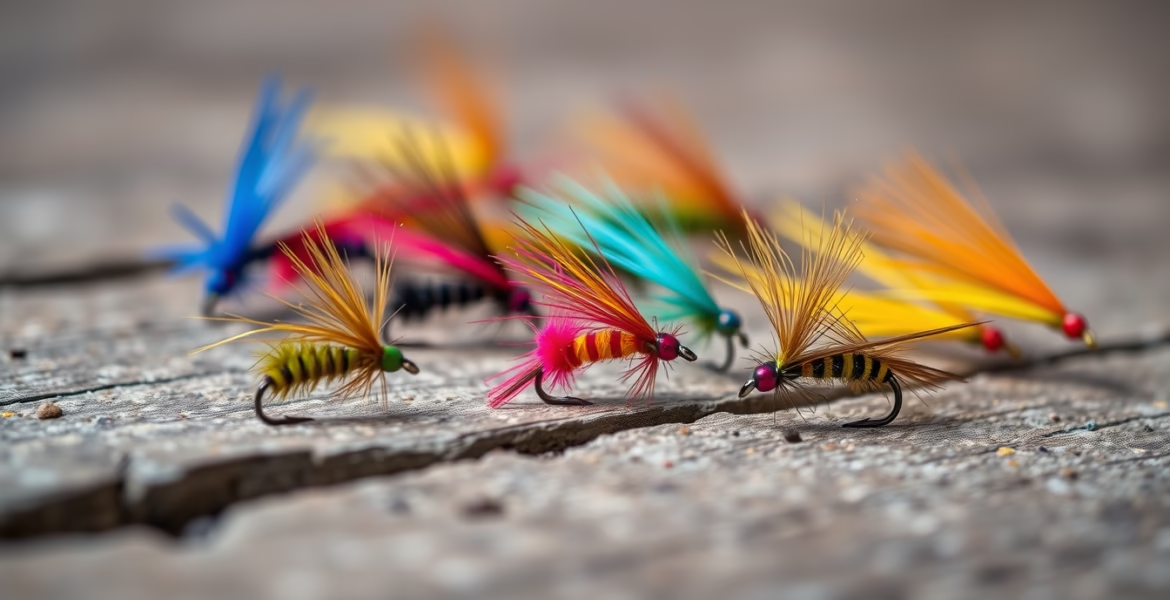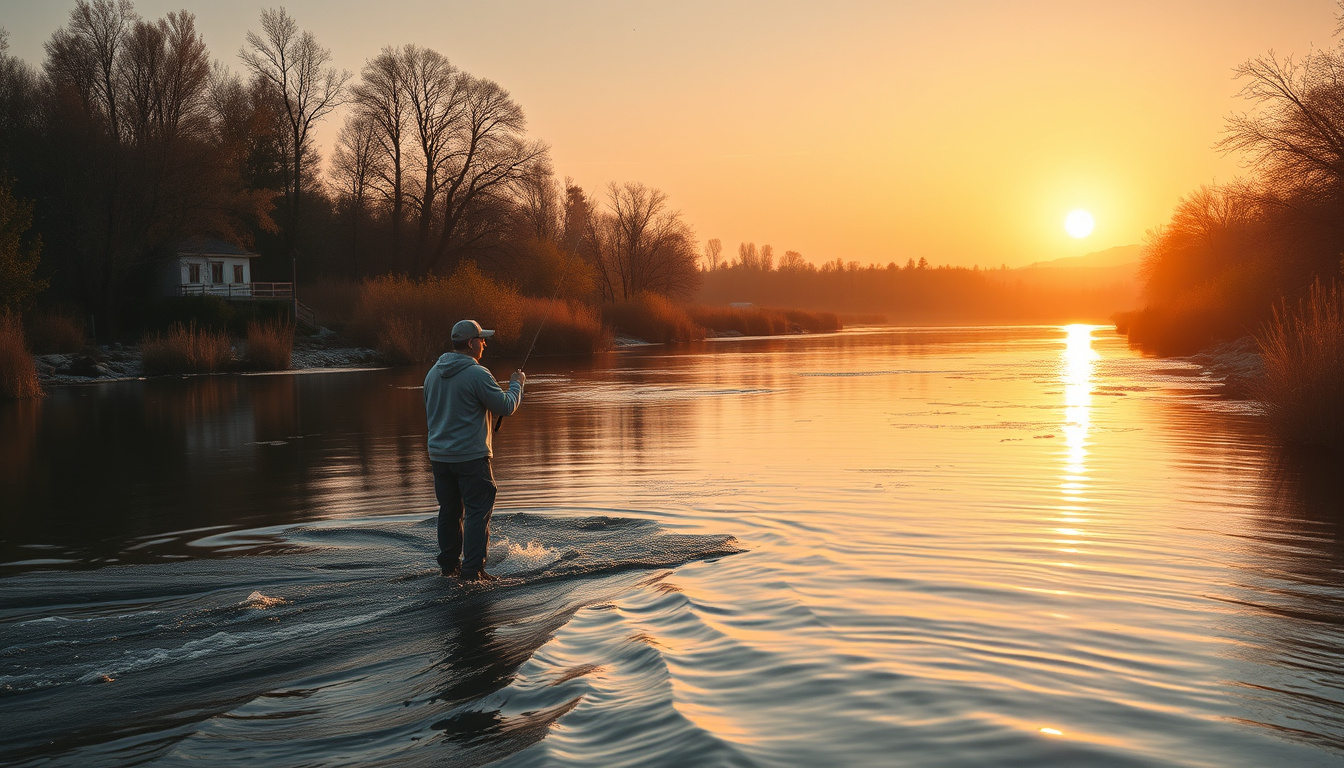
Mastering Fishing Flies: Top Techniques for Catching More Fish
On July 8, 2025 by Andy FordFishing flies serve as key tools for anglers. They help you show bait with care and true skill. Novices and seasoned anglers can use these flies to catch more fish. In this article, we share top ideas to help you learn to use fishing flies and catch more fish fast.
What Are Fishing Flies?
Fishing flies mimic small bugs or baitfish. They copy the look and move of live insects. They come in types like dry flies, wet flies, nymphs, and streamers. Each fly works in its own way for different waters and fish. Using the right fly at the right time can mean the difference between an empty box and a full catch.
Picking the Right Fly for Your Fish
One key step for using fishing flies well is to pick the proper one for your water and fish. Fish eat different things. For instance:
- Trout often like mayfly copies like dry flies.
- Bass often chase larger streamer styles.
- Panfish work with basic wet flies or nymphs.
Ask local fly shops or fishing experts about what works best. Matching your fly to the local bugs is a smart way to fish well.
Technique #1: Casting with Care
Casting must be done with a steady hand when using fishing flies. Fly casting uses the line’s weight to send the fly out. Try these steps:
- Grip: Hold the rod so your wrist stays loose.
- Back cast: Pull the line back in a smooth move to gain speed.
- Forward cast: Push the rod forward and slow to let the fly dance on the water.
- Presentation: Lay the fly on the water with care so fish are not frightened.
With steady practice, your fly looks natural. This close link of movement helps fish see the fly as real prey.
Technique #2: Retrieving the Fly
How you pull the fly after casting can copy how real bugs move.
- Dead drift: Let the fly move with the current. This works well with nymphs and dry flies.
- Strip retrieve: Pull the line in short bursts to mimic swimming prey. This works best for streamers.
- Swinging: Let the fly swing across the water as if it is an insect that barely lands.
Changing the pace and move of the fly can boost your chance to fool fish.
Technique #3: Spotting the Fish
Knowing where to fish works along with fly tricks. Fish stay in places with food and cover. Look for spots like these:
- Riffles and runs – fast water where bugs hatch.
- Pools – deep water where fish rest.
- Underwater structure – logs, rocks, or plants that hide fish.
Casting near these places puts your fly close to where fish are.

Tools for Fishing Flies
A simple set of gear can back your fly skills. Get these tools:
- Fly rod and reel: Pick one that suits your fish.
- Fly line: Use floating lines for most spots. Use sinking lines for deep waters.
- Tippet and leader: See-through lines that join your fly to the main line.
- Fly box: A small case to keep your flies safe.
- Forceps and nippers: Tools to remove hooks and cut lines.
Keeping your tools clean keeps them working well.
Top Five Fly Patterns for Starters
If you are new to flies, try these simple patterns to build your skill and win more fish:
- Adams Dry Fly: A common dry fly that works well for trout.
- Pheasant Tail Nymph: Mimics small aquatic bugs for fishing in deep water.
- Woolly Bugger: A streamer that copies small baitfish and leeches.
- Elk Hair Caddis: Copying real caddisflies that land on water.
- Zebra Midge: A small fly perfect for clear water and cautious trout.
These flies work well when used in the right spots and times.
Safety Tips When Using Flies
Fishing is fun but must be safe. Keep these tips in mind:
- Wear polarized sunglasses. They keep your eyes safe and help you see in water.
- Use sunscreen and bug spray in the sun.
- Cast in open spaces so you do not hook objects or others.
- Keep hooks safe and away from children’s hands.
Safe steps in fishing help you stay well and happy.
Frequently Asked Questions (FAQ)
Q1: What is the best time to use fishing flies?
A1: Early mornings and late evenings work best since many small bugs appear then and fish eat more.
Q2: How do I choose the right size of fishing flies?
A2: Pick flies that match the size of local bugs or baitfish. Medium sizes often work well.
Q3: Can fishing flies be used in saltwater?
A3: Yes. Saltwater fly fishing is popular. Special flies work well for fish like bonefish, tarpon, and striped bass.
Conclusion: Grow Your Fly Fishing Skills
Learning to use fishing flies well is both an art and a science. By choosing the right fly, casting with care, pulling the fly as if it were real, reading the water, and using the right gear, you can boost your fish catch. Keep practicing and stay patient.
Ready to take your fly fishing skills higher? Get your gear, choose your fly, and try local waters. With these steps, you will catch more fish and enjoy the joy of fly fishing. Dive in today and feel the change in your catch rate!
Archives
Calendar
| S | M | T | W | T | F | S |
|---|---|---|---|---|---|---|
| 1 | 2 | |||||
| 3 | 4 | 5 | 6 | 7 | 8 | 9 |
| 10 | 11 | 12 | 13 | 14 | 15 | 16 |
| 17 | 18 | 19 | 20 | 21 | 22 | 23 |
| 24 | 25 | 26 | 27 | 28 | 29 | 30 |
| 31 | ||||||
